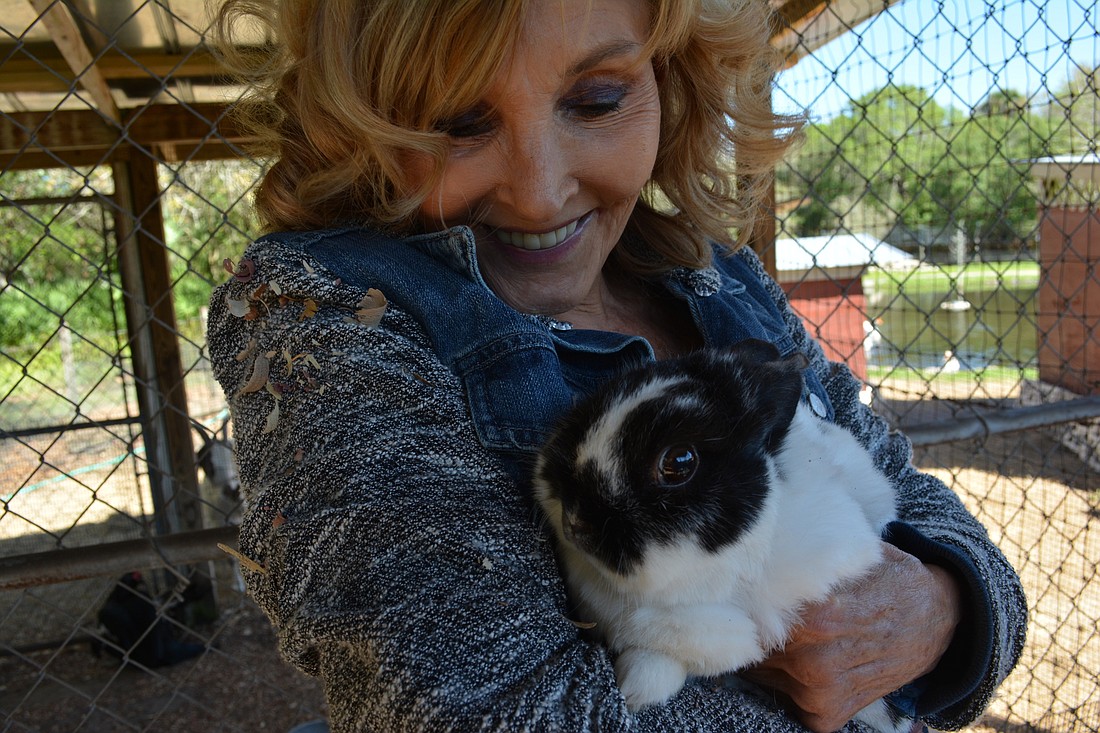- April 30, 2024
-
-
Loading

Loading

After a three-year endeavor to ban the sale of commercially bred dogs and cats in Sarasota County finally proved successful in January, Elise Matthes thinks county officials aren’t necessarily eager to get more input from animal activists.
Still, the approaching Easter holiday highlights one area in which advocates opposed to the sale of animals fell short. For Matthes, head of Sarasota in Defense of Animals, the idea of a family making a spur-of-the-moment decision to buy a rabbit doesn’t come with any seasonal sentimentality.
“The average person should not get a rabbit for a pet,” Matthes said. “I don’t think a child can take care of a rabbit, number one, and it’s just not a good life for a rabbit.”
The County Commission narrowly approved the dog and cat sales ban in January. The conversation on that topic began in November 2012, when Matthes’ son, Russell Matthes, appeared before the board to make the case for new regulations that would include a restriction on rabbit sales.
As the plan went through significant legal vetting — and saw pushback from pet shop owners and breeders — dog and cat sales became the higher-profile focus of the county’s efforts. Comparatively, there wasn’t much attention devoted to rabbits. By the time the ordinance was finalized, the scope had been narrowed to just cats and dogs.
“The rabbits — I don’t get that,” Commissioner Al Maio said at a September meeting, after which rabbits were removed from the ordinance. “Come to my house, and you’ll see 20 of them in the first hour that you’re there.”
Ultimately, the majority of those who spoke on the sales ban were focused on dogs and cats as well. Still, a subset of activists believes that, if rabbit sales were restricted, the animals would be less likely to be matched with an owner unaware of the attendant responsibilities.
“Rabbits don’t have a fair chance until they may also be only sold directly by breeders to legitimate owners who will give them the love and care they need and deserve,” wrote Nancy Gerhardt, a veterinarian concerned about the county’s decision, in a letter to the Sarasota Observer.
Elise Matthes has firsthand experience caring for rabbits. On the 10-acre SDA animal sanctuary, two bunny barns serve as home for about 40 rabbits. Around this time of year, she said, there’s a spike in the number of stray rabbits the county takes in, which she attributed to people who quickly came to regret their choice of pet.
Sarasota County Animal Services has taken in a total of 11 rabbits in the past year, according to sheriff spokeswoman Kaitlyn Johnson. Ten of those rabbits went to Tampa- and Arcadia-based animal rescues, while the other was returned to its owner.
“There’s not really an adoption process,” Johnson said. “We almost always give them to rescue groups.”
Animal advocates urge prospective rabbit owners to do their due diligence before making any purchases. Given the animals’ lifespan — the oldest one on Matthes’ preserve is 16 years old — a rabbit owner is making a significant commitment. If not spayed or neutered, rabbits are susceptible to health risks, such as high rates of uterine cancer in females.
“The average person should not get a rabbit for a pet.” — Elise Matthes
In addition to rabbits, the SDA sanctuary is home to dogs, cats, goats, sheep, pot bellied pigs and other animals. Matthes has overseen the nonprofit for 27 years, inspired by a lifelong love of animals and her late husband’s animal advocacy. Aided by a few part-time workers and volunteers, she depends on donations to keep the sanctuary active.
Taking on the rabbits comes with a host of responsibilities, including getting the animals spayed and neutered and trimming their nails. She doesn’t offer adoption services anymore, content to let the rabbits live out their lives on her property. In addition to her belief that the rabbits are better off in this environment, the arrangement offers some personal benefits for her, too.
“They’re so cute because they snuggle up with each other,” Matthes said. “They’re very social.”
Matthes goes one step further than the advocates calling for educated rabbit owners. She thinks the sanctuary is the type of setting that all rabbits should be able to call home — an expansive open area, re-creating an essential element of the animal’s natural habitat. The ability to roam free and interact with other animals is essential, she believes.
“Animals get bored just like people,” Matthes said. “They need something to enrich their lives to make it worthwhile.”